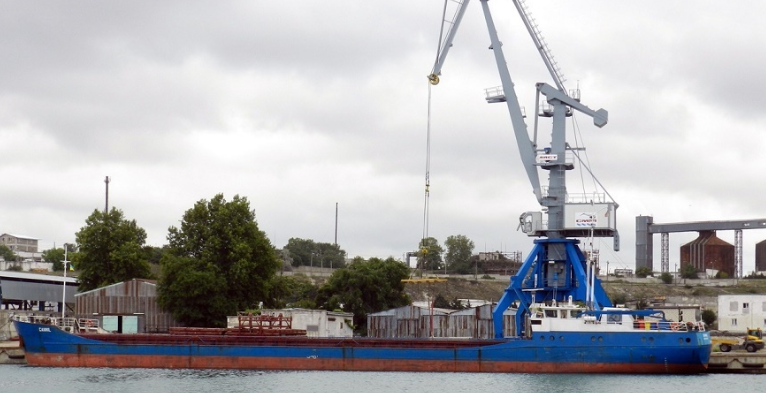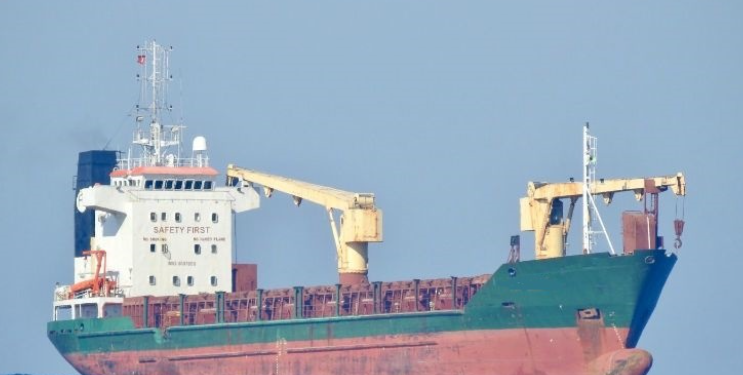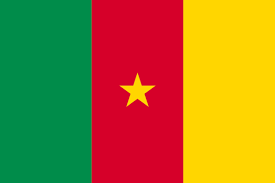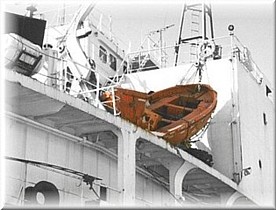最近では、カメルーン籍船が日本でも見かけられるようになった。
出港停止命令を受ける頻度が増えた。
UAE bans Cameroon-flagged ships: Is this a clampdown on illegal activities of Russia’s ghost fleet? 01/10/24 (Offshore Energy)
by Naida Hakirevic Prevljak
The United Arab Emirates (UAE) has banned vessels flying the flag of the Republic of Cameroon from calling UAE waters and ports.
On Januaury 2, 2024, the UAE Federal Maritime Administration (FMA), represented by the Ministry of Energy and Infrastructure, published a new circular.
In the circular, the FMA said it decided to include the vessels registered under the flag state of Cameroon to the existing list of restricted flag state vessels.
As informed, the Cameroon-flagged ships have no longer access to UAE ports and waters unless they are classed by a member of the International Association of Classification Societies (IACS) or by the Emirates Classification Society – Tasneef.
“Accordingly, all the maritime companies and ship agents in UAE are hereby requested not to provide the services to those vessels that are not complying with this circular to avoid legal accountability,” the FMA noted.
Apart from Cameroon, the concerned flag states countries list includes Albania, Belize, the Democratic People’s Republic of Korea, Sao Tome and Principe, Tonga, Congo, Equatorial Guinea, and the United Republic of Tanzania.
The administration, which is responsible for regulating foreign ships’ operations in the UAE waters and ports, has not provided further information explaining the reason behind this decision. However, reports indicate that the ban may be linked to Cameroon’s reputation as a ‘heaven’ for Russia’s so-called ghost fleet.
There is a growing number of law-abiding ships in the world which have no insurance protection. Having no insurance becomes a problem when accidents involving these ghost ships occur, especially for countries controlling the waters where accidents take place.
Therefore, the UAE’s recent move can be seen as an attempt to distance itself from unfortunate and risky situations involving ghost ships.
Since the introduction of the G7 oil price cap for Russia’s crude oil and refined products there have been speculations on Russia’s so-called shadow fleet being used to evade sanctions. Last year, S&P Global Market Intelligence whitepaper estimated that 443 tanker vessels (with a deadweight greater than 10,000) are currently operating within the Russian shadow or ghost fleet. Cameroon is among the flag states linked to vessels’ illegal activities, according to the report.
It is worth noting that the Paris MOU has identified Cameroon as a flag state with a ‘very high risk’, placing it on its Black List of ships. Vessels Haksa, Skymoon King, Gelibolu 2, Sefora, Sheksna, Bella are currently banned from the Paris Mou region, data provided by the Paris MoU shows.
Salvage teams in Indonesia attend to grounded shadow-fleet tanker 12/11/2023 (Insurance Marine News)
Indonesian salvage teams have managed to free suezmax Liberty (IMO 9207027), which grounded in the Singapore Strait west of Batam. The 23-year-old, Cameroon-flagged “shadow fleet” tankship ran aground last Sunday December 3rd. It took until Wednesday to get the suezmax free. According to TankerTrackers.com the ship is carrying nearly 1m barrels of Venezuelan fuel oil.
Five tugboats were needed to move the ship from its grounded position. It appears still to be in the area, motionless, indicating presumably that it is being checked for any hull damage.
The increasing number of elderly tankers continuing to ply their trade, while not being insured by the major marine liability or hull markets, is causing a significant degree of concern with the littoral states of seaways carrying a large number of tankers.
Before 2019, tankers over 20 years of age that were still operating made up just 1% of the global tanker fleet. This rose to 3% by early 2022, but since the beginning of the Russian war with Ukraine in February 2022, the percentage is on track to constitute 11% of the global fleet by 2025, according to data from brokers Braemar.
An Indonesian Navy spokesman said that an investigation into the circumstances surrounding the accident was underway. TankerTrackers data, confirmed by Kpler, showed that the ship was carrying a cargo of oil from Venezuela. Both firms said that as recently as October the Liberty was pretending to be off the coast of West Africa when in fact it was collecting oil from Venezuela. “Spoofing” a false AIS is also a matter of concern for the international shipping community and states with a vulnerability to environmental disasters.
Singapore is next to a transfer hub near Malaysia. Its role as a key transit point before heading to buyers in east Asia makes it particularly exposed to the risks from shadow fleet ships. However, other areas, such as those where ship-to-ship transfers occur, are also seen as a serious danger to the environmental health of the oceans.
The International Maritime Organization only last week branded the situation a matter of “grave concern”.
The Cameroon flag is the only one designated as “very high risk” on a black list published by the Paris Memorandum on Port State Control, which oversees ship inspections and promotes safety. A firm called Skyward Management Corp., with an address in Kazakhstan, is listed as its technical manager.
When the vessel was inspected in Singapore in 2017 and 2019 it was deemed high risk and had a handful of deficiencies. It was then sold to new owners. Subsequent inspections in Malaysia and Indonesia did not identify any issues.
The tanker receives classification services from a firm called Mediterranean Shipping Register.
2000-built, Cameroon-flagged, 83,724 gt Liberty is listed by Equasis as owned by Vythos ventures Co of Majuro, Marshall Islands. ISM manager is Skyward Shipmanagement Corp of Almaty, Kazakhstan. As of December 9th it was listed as stopped near its grounding location, having left Primorsk, Russia, on July 1st.
M/V “HAKSA” refused access to the Paris MoU 09/18/23 (SAFETY4SEA)

According to Paris MoU, M/V “HAKSA” detained in port Venice (Italy) on 25 August 2023 and left the port without complying with the conditions determined by the port State authority.
In particular, the ship’s Master did not comply with the conditions for a safe voyage to the designated repair port, by sailing:
- beyond the limit of 20 miles from the nearest coast, and
- in bad weather conditions (wind and sea state higher than the allowed limit - sea 2/wind 3).
The ship flies the flag of Republic of Cameroon, which is black on the current Paris MoU WGB list.
In accordance with section 4.2 of the Paris Memorandum of Understanding on Port state Control, Article 21.4 of Eu Council Directive 2009/16/EC1 and article 24.1 of national Decree March 24th, 2011 No.53, the above named vessel will be refused access to any port and anchorages in the Paris MoU region, except a port and anchorage of the ship’s flag State.
M/V “GELIBOLU 2” vessel refused access to the Paris MoU 09/15/23 (SAFETY4SEA)

According to Paris MoU, M/V “GELIBOLU 2” vessel was detained in Constanta (Romania) on 28 August 2023. This is the third detention in the Paris MoU within the last 36 months.
As explained, the ship flies the flag of Republic of Cameroon, which is black on the current Paris MoU WGB list.
Therefore under the provisions of section 4 of the Paris MoU, Article 16 of EU Council Directive 2009/16/EC, the ship will be refused further access to any port and anchorage in the Paris MOU region, except a port and anchorage of the ship’s flag State. This refusal of access will become applicable immediately after the ship is authorized to leave this port and anchorage.
As this is the second refusal of access order, the period of the refusal of access will be 12 months.
According to Paris MoU, people’s attention is drawn to the provisions of Section 4.4 of the Paris MOU, Article 21.6 of EU Council Directive 2009/16/EC1, which allow access to a specific port and anchorage in the event of force majeure or overriding safety considerations, or to reduce or minimize the risk of pollution or to have deficiencies rectified, provided that adequate measures to the satisfaction of the competent authority of such State have been implemented by the company or the master of the ship to ensure safe entry.
M/V “SKYMOON KING” vessel refused access to the Paris MoU 09/15/23 (SAFETY4SEA)

According to Paris MoU, M/V “SKYMOON KING” detained in Kalymnos (Greece) on 2 September 2023. This is the third detention in the Paris MoU within the last 36 months.
As explained, the ship flies the flag of Republic of Cameroon, which is black on the current Paris MoU WGB list.
Therefore under the provisions of section 4 of the Paris MoU, Article 16 of EU Council Directive 2009/16/EC, the ship will be refused further access to any port and anchorage in the Paris MOU region, except a port and anchorage of the ship’s flag State. This refusal of access will become applicable immediately after the ship is authorized to leave this port and anchorage.
As this is the first refusal of access order, the period of the refusal of access will be 3 months.
Paris MoU, people’s attention is drawn to the provisions of Section 4.4 of the Paris MOU, Article 21.6 of EU Council Directive 2009/16/EC1, which allow access to a specific port and anchorage in the event of force majeure or overriding safety considerations, or to reduce or minimize the risk of pollution or to have deficiencies rectified, provided that adequate measures to the satisfaction of the competent authority of such State have been implemented by the company or the master of the ship to ensure safe entry.
Cameroon becomes a go-to country for foreign fishing vessels 07/27/22 (AP News)
DOUALA, Cameroon (AP) — Off the coast of West Africa, the Trondheim is a familiar sight: a soccer field-sized ship, plying the waters from Nigeria to Mauritania as it pulls in tons of mackerel and sardines — and flying the red, yellow and green flag of Cameroon.
But aside from the flag, there is almost nothing about the Trondheim that is Cameroonian.
Once, it operated under the name of the King Fisher and sailed under the flag of the Caribbean nation St. Vincent and the Grenadines. Then it switched to Georgia, the former Soviet republic. It was only in 2019 that it began flying the banner of Cameroon.
The Trondheim is one of several vessels reflagged under Cameroon’s growing fishing fleet that have changed names and been accused of illicit activities at sea. Currently, an investigation by The Associated Press found, 14 of these vessels are owned or managed by companies based in European Union member states: Belgium, Malta, Latvia and Cyprus.
関連記事のリンク集
下記の問題も
欠陥船(サブスタンダード船)
の排除のためには解決されなければならない。
国連機関、欠陥船根絶へ出張監査 日本提唱で攻め姿勢へ (朝日新聞)
欠陥船根絶で監査制度試行 日本の提唱受けIMO (共同通信)
サブスタンダード船が生み出されないようにするための提案
不正はいろいろな組織で存在する!
リンク集
リンク先の情報については一切責任を負いかねますことを申し添えます。
リンク先の中には繋がらないものもあると思いますが、ご容赦ください。
 カンボジア籍船
カンボジア籍船
 トーゴ籍船
トーゴ籍船
 モンゴル籍船
モンゴル籍船
 シエラレオネ籍船
シエラレオネ籍船
 ツバル船籍船
ツバル船籍船
 フィジ籍船
フィジ籍船
 ベリーズ籍船
ベリーズ籍船
 パナマ船籍
パナマ船籍
 不適切な検査:パナマ ビューロー
不適切な検査:パナマ ビューロー
 韓国客船 Sewol沈没
韓国客船 Sewol沈没
 フィリピンでの船舶による油流出事故
フィリピンでの船舶による油流出事故
 ソーラー1(Solar 1)フィリピンで沈没!
ソーラー1(Solar 1)フィリピンで沈没!
 パナマ船籍の「マリナ アイリス」が沈没!
パナマ船籍の「マリナ アイリス」が沈没!
 カンボジア籍船の海難
カンボジア籍船の海難
 カンボジア船籍船 AN FENG 8
カンボジア船籍船 AN FENG 8
 カンボジア船籍船 MING GUANG(ミンクァン)
カンボジア船籍船 MING GUANG(ミンクァン)




